Biology
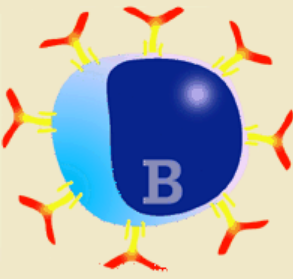
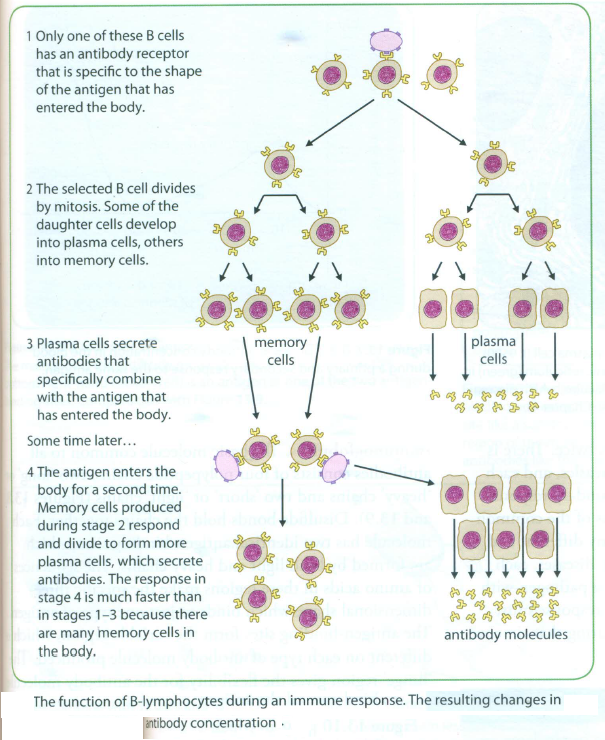
Some of these synthesise and secrete large quantities of proteins called immmunoglobulins or antibodies. The antibodies have the same binding sites as the specific receptors in the B-lymphocyte's membrane, so they can bind with the antigens. This maydirectly destroy or neutralise the antigens, or it may make it easier for phagocytes to destroy them.
Some of the clone of B-lymphocyte cells become memory cells. These remain in the blood for many years. They are able to divide rapidly to produce plasma cells if the same antigen invades the body again. More antibody is therefore secreted more rapidly than when the first invasion happened, and it is likely that the pathogens will be destroyed before they have a chance to reproduce. The person has become immune to this pathogen.
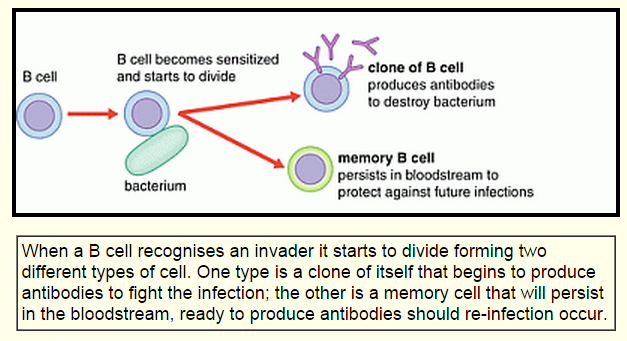
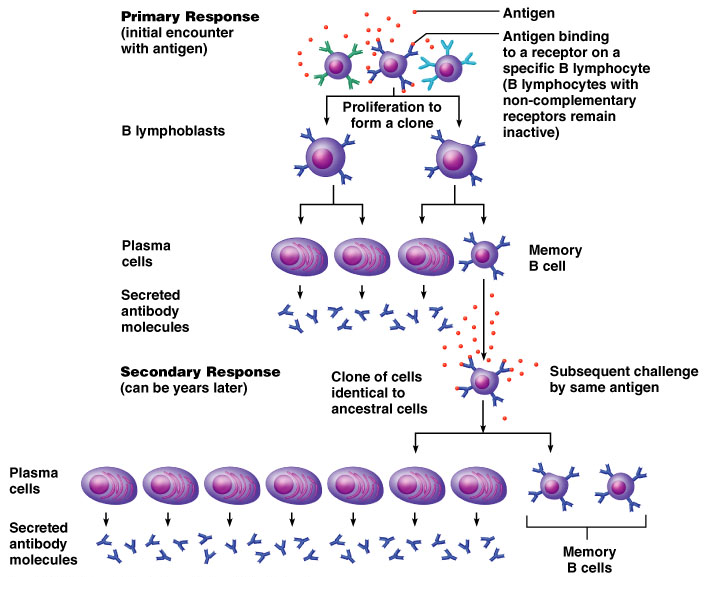
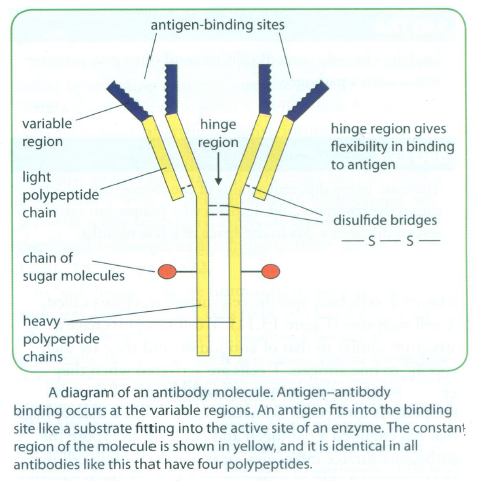
The variable region of the immunoglobulin molecule is specific to the particular clone of B-lymphocytes that secreted it. It is able to bind with a particular type of antigen molecule.
Immunoglobulins can:
? stick bacteria together, making it impossible for them to divide or making it easier for phagocytes to destroy them;
? neutralise toxins (poisonous chemicals) produced by pathogens;
? prevent bacteria from sticking to body tissues;
? bind to viruses and prevent them infecting cells.
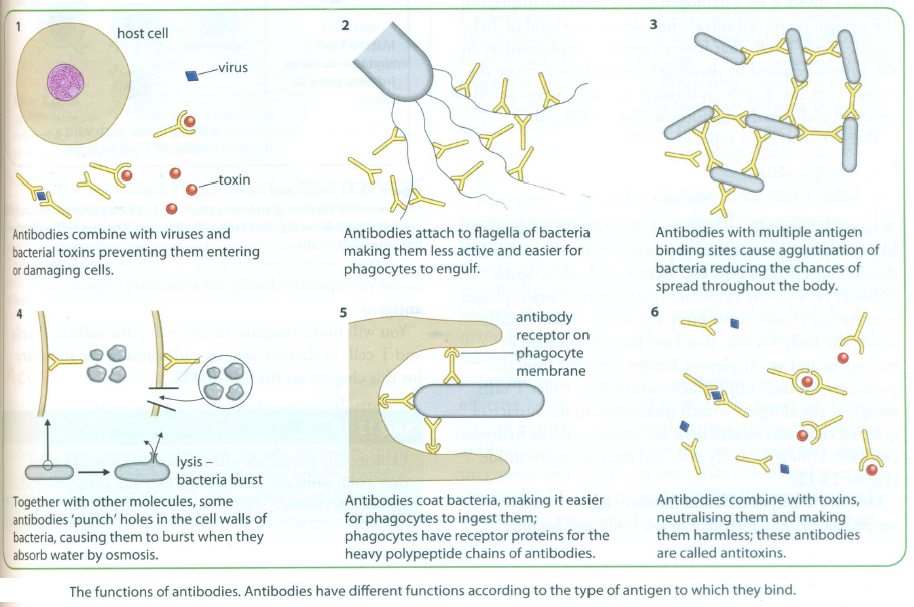
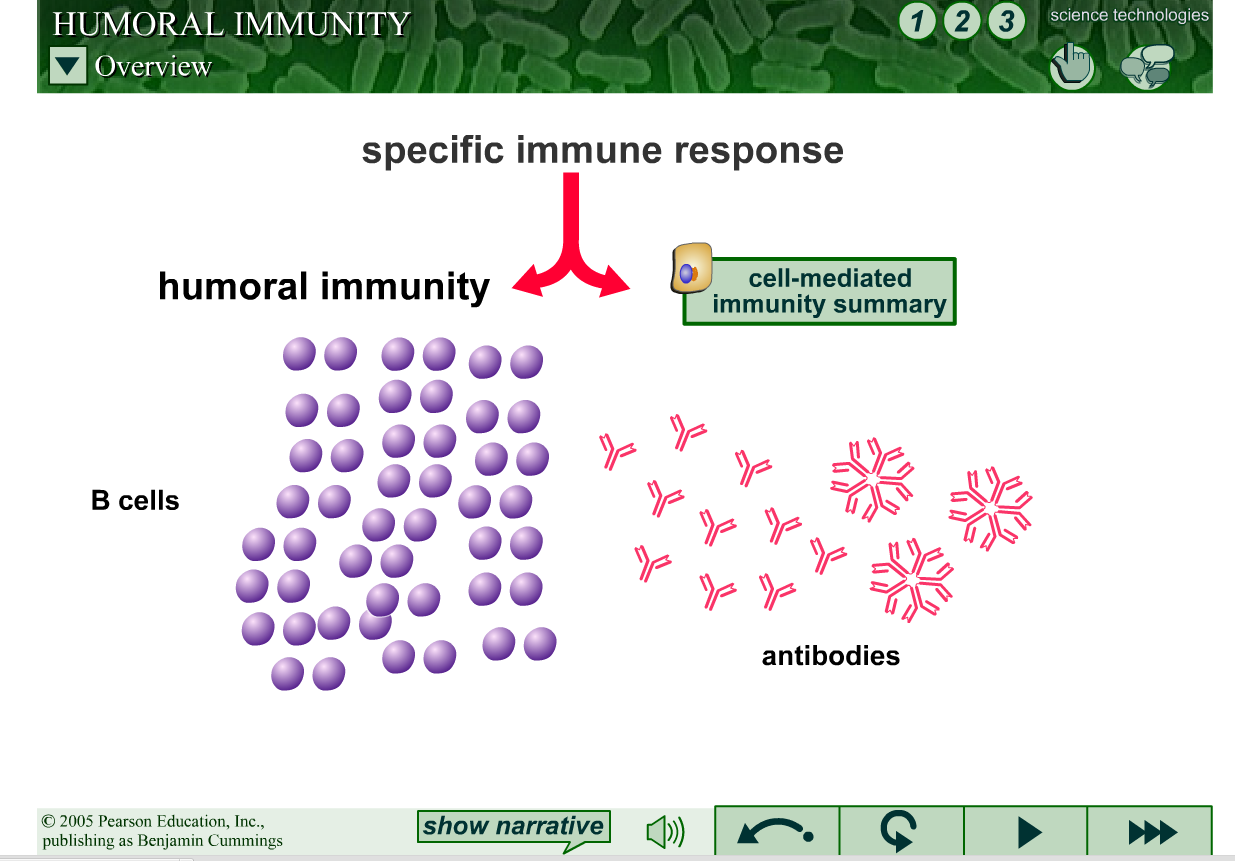
- # 63 Summary Of Immunity
1 Phagocytes and lymphocytes are the cells of the immune system. 2 The diagram shows how to recognise phagocytes and lymphocytes in microscope slides and photomicrographs of blood. 3 Phagocytes originate in the bone marrow and are produced there throughout...
- # 61 Action Of T-lymphocytes
T-lymphocytes include T helper cells and T killer cells. Both of these types of cell place their specific receptors in their cell surface membranes. On encountering the relevant antigen, they are activated and divide by mitosis to form...
- #59 The Immune Response - Lymphocytes
Lymphocytes, unlike phagocytes, act against specific pathogens. Each lymphocyte contains a set of genes that codes for the production of a particular type of receptor. We have many million different types, each producing just one type of receptor....
- # 58 The Immune System - Phagocytes
Credit: Pass My Exams.The human immune system is made up of the organs and tissues involved in destroying pathogens inside the body. There are 2 main groups of cells involved: ? phagocytes: ingest and digest pathogens or infected cells; ? lymphocytes: ...
- #57 Immunity - Syllabus 2015
? The immune system ? Vaccination Candidates should be able to: (a) [PA] recognise phagocytes and lymphocytes under the light microscope; (b) state the origin and describe the mode of action of phagocytes (macrophages and neutrophils); (c) describe...
Biology
# 60 Action of B-lymphocytes

A B-lymphocyte places some of its specific receptor molecules in its cell surface membrane. If it encounters an antigen that binds with this receptor, the B-lymphocyte is activated. It divides repeatedly by mitosis to produce a clone of genetically identical plasma cells.

Some of these synthesise and secrete large quantities of proteins called immmunoglobulins or antibodies. The antibodies have the same binding sites as the specific receptors in the B-lymphocyte's membrane, so they can bind with the antigens. This maydirectly destroy or neutralise the antigens, or it may make it easier for phagocytes to destroy them.
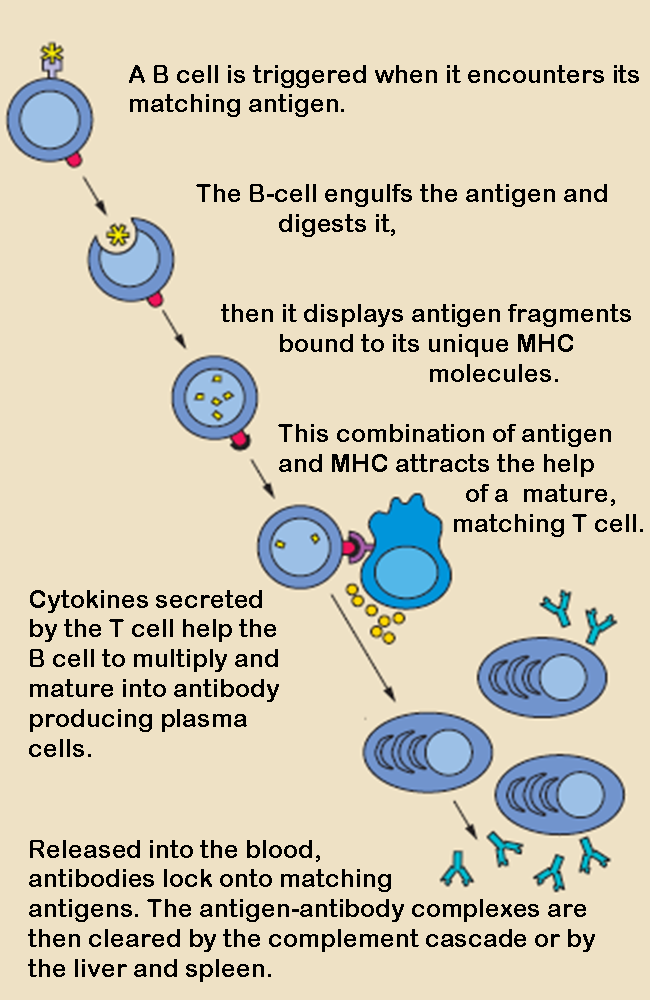 |
| (* MHC - major histocompatibility complex) |
Some of the clone of B-lymphocyte cells become memory cells. These remain in the blood for many years. They are able to divide rapidly to produce plasma cells if the same antigen invades the body again. More antibody is therefore secreted more rapidly than when the first invasion happened, and it is likely that the pathogens will be destroyed before they have a chance to reproduce. The person has become immune to this pathogen.


Antibodies
Antibodies are glycoproteins called immunoglobulins that are secreted by plasma cells in response to the presence of antigens.

The variable region of the immunoglobulin molecule is specific to the particular clone of B-lymphocytes that secreted it. It is able to bind with a particular type of antigen molecule.
Immunoglobulins can:
? stick bacteria together, making it impossible for them to divide or making it easier for phagocytes to destroy them;
? neutralise toxins (poisonous chemicals) produced by pathogens;
? prevent bacteria from sticking to body tissues;
? bind to viruses and prevent them infecting cells.

Animation
Humoral immunity

Syllabus 2015 ? The immune system (c) describe the modes of action of B-lymphocytes (e) explain the role of memory cells in long-term immunity; (f) relate the molecular structure of antibodies to their functions; |
Syllabus 2016 11.1 The immune system b) describe the modes of action of B-lymphocytes e) explain the role of memory cells in long-term immunity f) explain, with reference to myasthenia gravis, that the immune system sometimes fails to distinguish between self and non-self |
- # 63 Summary Of Immunity
1 Phagocytes and lymphocytes are the cells of the immune system. 2 The diagram shows how to recognise phagocytes and lymphocytes in microscope slides and photomicrographs of blood. 3 Phagocytes originate in the bone marrow and are produced there throughout...
- # 61 Action Of T-lymphocytes
T-lymphocytes include T helper cells and T killer cells. Both of these types of cell place their specific receptors in their cell surface membranes. On encountering the relevant antigen, they are activated and divide by mitosis to form...
- #59 The Immune Response - Lymphocytes
Lymphocytes, unlike phagocytes, act against specific pathogens. Each lymphocyte contains a set of genes that codes for the production of a particular type of receptor. We have many million different types, each producing just one type of receptor....
- # 58 The Immune System - Phagocytes
Credit: Pass My Exams.The human immune system is made up of the organs and tissues involved in destroying pathogens inside the body. There are 2 main groups of cells involved: ? phagocytes: ingest and digest pathogens or infected cells; ? lymphocytes: ...
- #57 Immunity - Syllabus 2015
? The immune system ? Vaccination Candidates should be able to: (a) [PA] recognise phagocytes and lymphocytes under the light microscope; (b) state the origin and describe the mode of action of phagocytes (macrophages and neutrophils); (c) describe...
